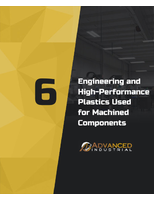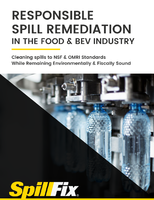Five Things a Restaurant Owner Should Know about Kitchen Exhaust Cleaning
As a kitchen exhaust cleaning (KEC) contractor, some of my time is spent educating customers on the proper ways to clean kitchen exhaust hood systems. I have found many restaurant and building owners simply don't know what is required of them, or don't know what is considered a properly cleaned kitchen exhaust hood system. In many instances, owners are led by unqualified contractors to believe that cleaning the hood and attaching a certificate of cleaning is sufficient enough to keep them in compliance with authorities. Unfortunately this lack of knowledge comes back to haunt an owner when a fire occurs. A proper cleaning of the entire kitchen exhaust system includes the hood, filters, fan and all associated horizontal and vertical ductwork. I refer customers to the NFPA-96 Standard (National Fire Protection Association Standard for Ventilation Control and Fire Protection of Commercial Cooking Operations 2011 edition) that provide the minimum fire safety requirements (preventative and operative) related to the design, installation, operation, inspection, and maintenance of all public and private cooking operations. The more owners know and understand what is required, the better they will be able to select contractors that will provide the proper service and better manage their fire protection.
Some of the most frequently asked questions I get from restaurant and building owners are as follows:
Question #1:
As an owner, what is my responsibility in regards to cleaning the kitchen exhaust system?
Answer:
According to NFPA-96 section 4.1.5: "the responsibility for inspection, testing, maintenance, and cleanliness of the ventilation control and fire protection of the commercial cooking operations shall ultimately be that of the owner of the system, provided that this responsibility has not been transferred in written form to a management company or other party."
In other words, it is the owner's responsibility to keep that system clean of grease and particulate buildup, and reduce the risk of a fire hazard. An incomplete cleaning performed by a low priced contractor (with most likely inadequate insurance coverage) will not protect the owner from the cost and litigation of a fire.
Question #2:
How often should my kitchen exhaust hood system be cleaned?
Answer:
According to NFPA-96 Standard section 11.4 the "entire exhaust system shall be inspected for grease buildup by a properly trained, qualified, and certified person(s) acceptable to the authority having jurisdiction and in accordance with Table 11.4."
Table 11.4 Schedule of Inspection for Grease Buildup
| Type or Volume of Cooking Frequency | Frequency |
|---|---|
| Systems serving solid fuel cooking operations | Monthly |
| Systems serving high-volume cooking operations such as 24-hour cooking, charbroiling, or wok cooking | Quarterly |
| Systems serving moderate-volume cooking operations | Semiannually |
| Systems serving low-volume cooking operations, such as churches, day camps, seasonal businesses, or senior centers. | Annually |
Question #3
What is considered clean?
Answer:
The industry standard is to clean to bare metal. If a system has not been cleaned properly for any length of time, sometimes it may take multiple cleanings before getting to bare metal. According to NFPA-96 section 11.6.2: "Hoods, grease removal devices, fans, ducts, and other appurtenances shall be cleaned to remove combustible contaminants prior to surfaces becoming heavily contaminated with grease or oily sludge."
The best way to determine if a surface is clean is to inspect it. If it looks like there is an accumulation of grease on a surface, then it probably needs cleaning. If you need a more precise measurement, ask an IKECA member for a Grease Gauge. The Grease Gauge is a tool developed by IKECA to determine the cleanliness of a system by measuring the fuel accumulation on a surface.
Question # 4:
Why do I need access doors, and why weren't they originally installed in the system?
Answer:
The most effective and efficient way to clean kitchen exhaust systems is by accessing as much of the system as possible. In order to reach parts of the system including horizontal and vertical ductwork, openings must be installed to clean these areas. Sometimes at the construction of the exhaust system, the proper amount of access panels needed to maintain the cleanliness of the system may not have been installed. In many systems, doors or panels were installed, but were inadequately sized to provide adequate cleaning. For example, it is extremely difficult to clean an 18" x 18" duct through an 8" x 8" opening.
NFPA-96 sections 7.4.1 and 7.4.2 recommend installation of openings large enough to permit thorough cleaning at a minimum of every 12 feet of horizontal ductwork and on every floor of vertical ductwork. It is also necessary to have access doors at every change of direction.
Question # 5:
What documentation do I need?
Answer:
The following documentation required by NFPA-96 sections include: 11.6.13 "When an exhaust cleaning service is used, a certificate showing the name of the servicing company, the name of the person performing the work, and the date of inspection or cleaning shall be maintained on the premises." 11.6.14 "After cleaning or inspection is completed, the exhaust cleaning company and the person performing the work at the location shall provide the owner of the system with a written report that also specifies areas that were inaccessible or not cleaned" and 11.6.15 "Where required, certificates of inspection and cleaning and reports of areas not cleaned shall be submitted to the authority having jurisdiction."
Many KEC contractors provide reports showing pre and post cleaning photographs and other observations and recommendations important to your system. In-depth reports and certificates of completion will provide owners with documentation necessary for insurance representatives, fire marshals, and other authorities having jurisdiction.
Matt Mongiello is Vice President of Interior Maintenance Company, Inc., a building maintenance contractor providing cleaning services to the Mid-Atlantic region for over 38 years. For more information, please visit our website www.imc.cc, or call 1-800-220-6547.




